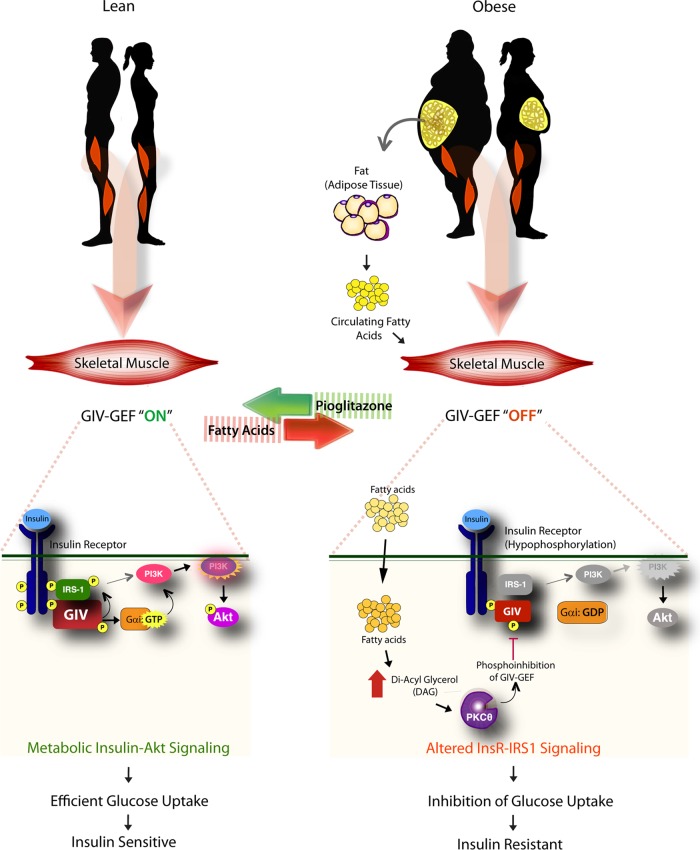FIGURE 7:
Schematic summarizing how GIV-GEF is a pivotal node for metabolic insulin response in lean normals (left) and for lipid-induced IR in the obese (right). Left, in lean individuals, insulin triggers tyrosine phosphorylation and activation of GIV (pY1764), GIV's GEF function is “on” and Gαi is activated. Metabolic insulin signaling is enhanced through the InsR/IRS1/PI3K/Akt/AS160 signaling axis, resulting in efficient exocytosis of GSVs and rapid uptake of glucose. Right, in the obese, circulating free fatty acids trigger the accumulation of DAG, and PKCθ is activated. PKCθ phosphorylates GIV at S1689 and turns “off” its GEF function. Consequently, Gαi remains inactive, and the InsR/IRS1/PI3K/Akt/AS160 signaling cascade is suppressed, thereby triggering IR.

